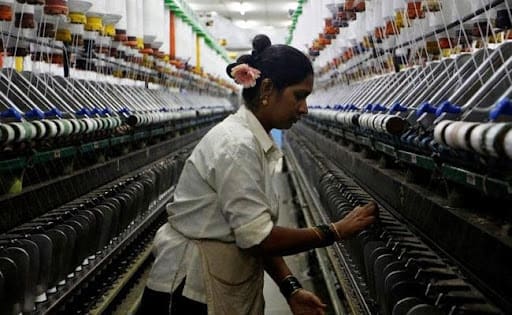India’s textile and apparel sector thrives throughout the entire value chain, from fibre to yarn to fabric to clothing. The textile sector is extremely diverse, with a wide range of segments, whether it is traditional handloom or modern textile manufacturing. To ensure a bright future for the textiles industry, the government has approved the Production-Linked Incentive (PLI) scheme worth Rs 10,683 crore to promote domestic manufacturing and exports, therefore creating a large number of job opportunities, and to provide assistance to businesses interested in expanding their operations in the sector.
What is PLI scheme?
Apart from focusing on reducing import expenses and enhancing the cost competitiveness of local goods, as the name implies, the scheme provides incentives to enterprises for strengthening their domestic manufacturing. PLI is a scheme that provides incentives for incremental sales of products made in India.
PLI schemes were sanctioned in March, 2020, and ten more were notified in November, with six of them being granted subsequently.
Which industries are presently funded by the scheme?
Electronic or technology products (outlay of Rs 5,000 crore for five years), food products (outlay of Rs 10,900 crore), pharmaceuticals drugs (outlay of Rs 15,000 crore), textiles, high-efficiency solar PV modules (outlay of Rs 4,500 crore), Automobiles and auto components, advance chemistry cell (ACC) battery, specialty steel telecom & networking products (outlay of Rs 12,195 crore), etc. were among the thirteen sectors which the scheme has already approved.
Textiles, MMF (man-made fibre) garments, MMF fabrics, and 10 categories or products of technical textiles are all covered by the PLI scheme. As a result of the scheme, the country will be able to produce high-quality MMF fabric, garments, and technical textiles.
Technical Textiles is a cutting-edge textile segment. Its use in a variety of industries, such as infrastructure, water, health and hygiene, defence, security, automobiles, and aviation, will contribute to enhance efficiency.
“Man-made and technical textiles account for two-thirds of international textile trade. This scheme has been approved so that India may contribute to the MMF fabric and garment ecosystem”, according to Commerce and Textiles Minister Piyush Goyal.
How PLI scheme will boost employment opportunities?
Over the next five years, the initiative hopes to attract new investment of Rs 19,000 crore in this industry for the manufacturing of in-demand textiles, as well as an additional turnover of Rs 3 lakh crore. This scheme for textile and apparel industry is part of a much larger announcement of PLI Schemes for 13 sectors with a total budget of Rs. 1.97 lakh crore, which were announced in the Union Budget 2021-22 previously.
More than 7.5 lakh people would be directly employed as a result of the scheme, which will also empower rural women.
Due to travel restrictions, lockdowns imposed by government, delay in installations of plant/machinery, and supply chain disruptions, enterprises were unable to reach their targets, the finance minister stated.
“The expansion of the scheme will help enterprises who have previously invested under the scheme”, said Shreegopal Kabra, Managing Director and Group President of RR Global.
According to industry analysts, the arrival of new companies will aid in the creation of jobs in the manufacturing facilities that will be established.
According to Sudeep Sen, the Business Head of Industrial Manufacturing and Engineering & General Staffing, TeamLease Services, “The PLI extension will provide greater opportunities for large-scale and mid-sized electronic manufacturing enterprises.”
“It indicates that they’ll have an additional year of production and a year of sales benefit. This will result in an extra 8-10% increase in employment. It will also result in more jobs in neighbouring industries and support systems units,” says Sen.
The PLI initiative aims to shift manufacturing away from ‘assembly in India’ and towards ‘make in India.’ Smartphones, laptops, televisions, washing machines and air conditioners are some of the product categories that possibly benefit.
The PLI incentives, according to Sen, will increase demand for both permanent and contract employees. Suitable positions may become available.
Sen further stated, “The contractual workforce will witness a 6-9 percent increase in employment, with a higher demand for component assemblers, quality specialists, and testing specialists. This will also mean more jobs for women, since we’ve witnessed a larger female employee participation in electronic manufacturing units.”
CPG Consulting’s senior vice president and analyst for white goods, Sudarshan Purohit, claimed “We lost a whole year due to mini-lockdowns all over India. Given the demographic dividend, companies from international market will be eager to enter now that the deadline has been extended until 2026. It would also increase hiring in R&D and blue-collar workers.”
Under the scheme, investment in aspirational districts, tier 3 and tier 4 municipalities, and rural areas will be prioritised. Women are predominantly employed in the textiles industry, therefore the PLI scheme will encourage them to participate more actively in the formal economy.
The government claims that the PLI scheme has the potential to produce approximately 1,80,000 employments (direct and indirect) over the next four years, in addition to local manufacturing facilities.
As per the government, it will have a significant influence on states like Gujarat, Maharashtra, Uttar Pradesh, Tamil Nadu, Punjab, and Odisha, among others.
References:
https://pib.gov.in/PressReleasePage.aspx?PRID=1753118
By: Somasree Roy

